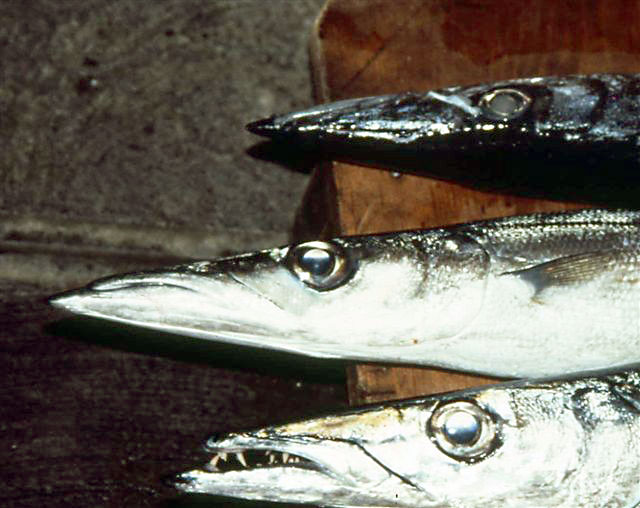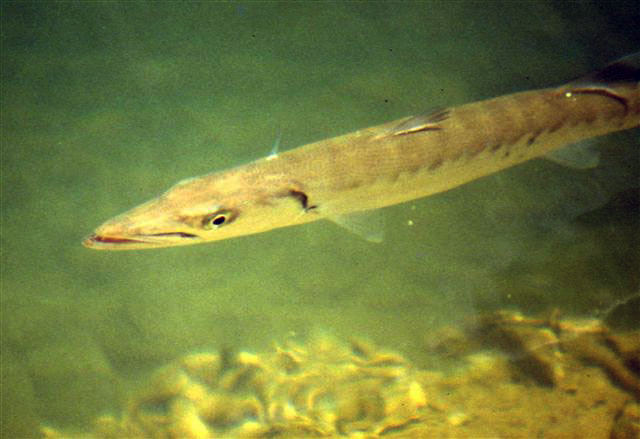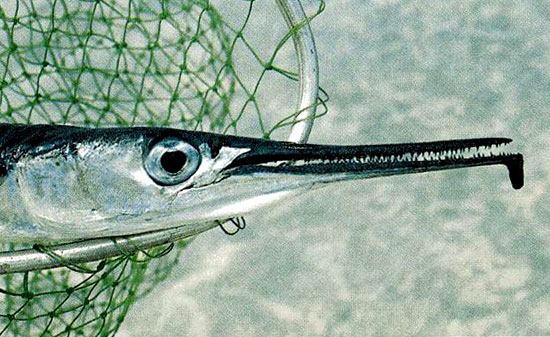Published in the Ocean Watch column, Honolulu Star-Advertiser © Susan Scott
July 29, 2005
Last week, a barracuda slammed into the abdomen of night diver Tonga Loumoli on Oahu’s Windward Coast, seriously injuring him. This is so unusual I wondered if the attack came from a needlefish. But then, needlefish injuries are also uncommon here.
“Is he sure it was a barracuda?” I asked the reporter covering the story.
Yes, she said. He and his dive partner saw it clearly, and both are experienced divers.
OK, we had a rare barracuda attack instead of a rare needlefish attack. But what does the species matter? This poor guy has a 6-inch gash in his belly and a damaged liver. Whichever fish struck him, Loumoli is lucky to be alive.
 Barracuda by Susan Scott
Barracuda by Susan Scott
Oceanwatcher
 Barracuda by Susan Scott
Barracuda by Susan Scott
Oceanwatcher
 Needlefish by Susan Scott
Needlefish by Susan Scott
Oceanwatcher
Whichever fish struck him also did so by accident. Neither barracudas nor needlefish would ever try to eat anything as big as a person. Both these predators eat fish smaller than themselves.
Some of those prey, though, can be pretty big. A large barracuda, which can grow 6 feet long, can cut a mature parrotfish in half with a single strike. The barracuda then circles around to eat bite-size pieces.
These fish chop up their meals this way because their mouths don’t expand like those of other fish predators that swallow their prey whole.
Needlefish grow to 3 feet long and have narrow, remarkably long bills, about one-quarter the fish’s length. These bills hold rows of sharp teeth that can surely cut but are built for grasping.
A needlefish strikes at a fish with a sideways motion of the head, seizes the prey in its needlelike teeth and swallows it whole.
The reason I thought a needlefish might have struck the headlamp-bearing Tonga is because these fish are notorious for getting startled by lights and leaping from the water.
Researchers have clocked needlefish skimming the surface at 38 mph. Fish traveling at this speed can, and occasionally do, impale people, sometimes with fatal results. Needlefish injuries have also occurred beneath the water’s surface.
Lights can confuse barracudas, too, especially if the light illuminates something metallic, such as the silver necklace Tonga wore on the night of the accident. Even in daylight it’s easy to see how a barracuda or needlefish could mistake a flash of jewelry for silvery fish scales.
Barracudas have struck twice off the Kona Coast at shiny barrettes in women’s hair. The women did fine, but one needed surgery to remove embedded teeth. Still, those are two of only six recorded barracuda attacks in Hawaii in the last 42 years. Three others (counting Loumoli) were fisherman; the other was a camera-bearing scuba diver.
That means there’s no reason to fear barracudas when you see them in the water. The odds are much higher of getting bitten by the neighborhood poodle.
But even though the risk of a barracuda (or needlefish) strike is extremely low, it’s unwise to fool with fast fish with sharp teeth. Therefore, I remove my jewelry before jumping into the ocean.
Loumoli, I’m sure, will now do the same.